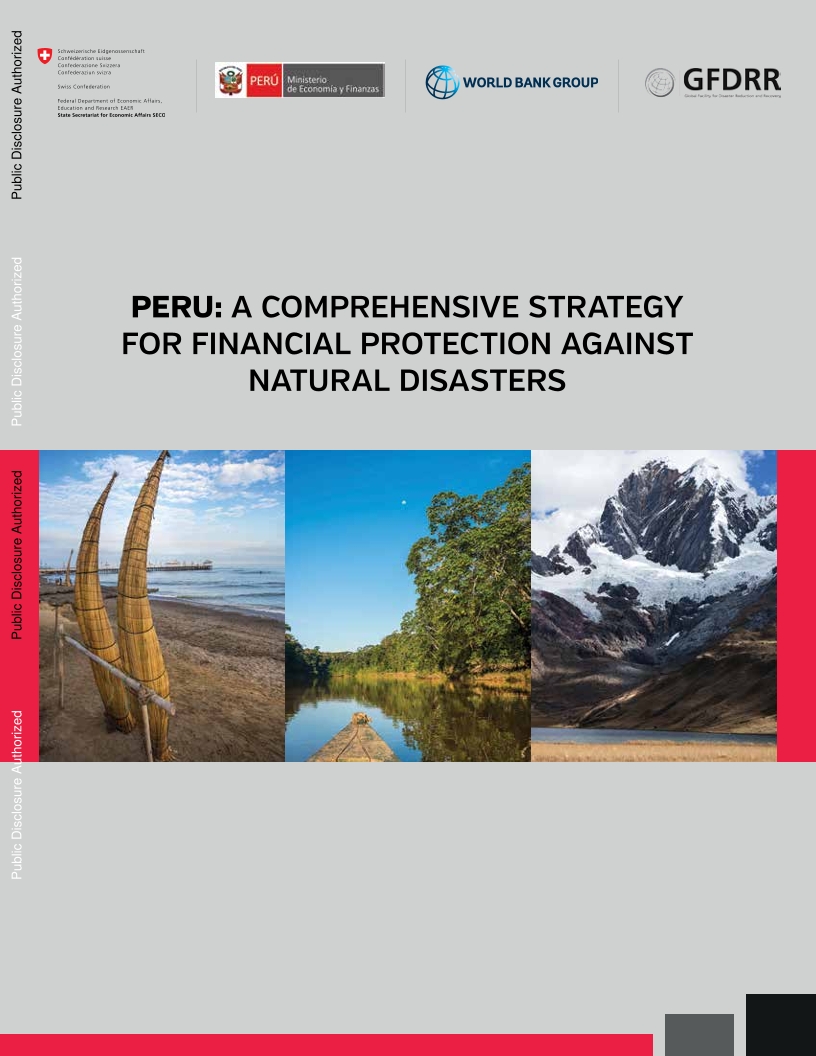Peru has adopted disaster risk management (DRM) as a state policy. Within this context, the country needed a legal framework that reflected both national policy on the subject and internationally recognized best practices in risk management. Accordingly, an act establishing the National Disaster Risk Management System (Sistema Nacional de Gestión del Riesgo de Desastres, or SINAGERD) was promulgated in February 2011, followed by publishing its enabling regulations in May of the same year. The system’s main objectives, among others, are to identify and reduce hazard-related risks and minimize their effects, prevent the occurrence of new risks, and mobilize resources both for preparedness and for a response when disaster strikes. One of the SINAGERD instruments is a financial management strategy. Under the SINAGERD Law, the MEF is responsible for identifying and evaluating appropriate cost-effective mechanisms that will ensure that Peru has the financial capacity to manage major disasters and the subsequent reconstruction phase, as well as appropriate mechanisms for disaster risk financial management.1 This overall context has given rise to the development of program budgets and public investment programs aimed at mitigating the economic and fiscal consequences of such events2 —measures that are important for reducing the financial needs resulting from a major disaster.
Peru. A Comprehensive Strategy for Financial Protection against Natural Disasters (2016)
February 23, 2020

